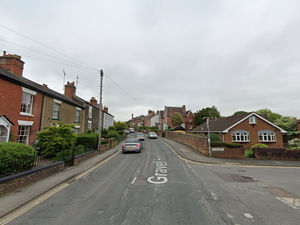Quarry expansion includes wetlands plan
Controversial plans to expand a major Shropshire quarry by nine acres includes provision to turn the existing site into a lake and wetlands area within the next 25 years.
 Controversial plans to expand a major Shropshire quarry by nine acres includes provision to turn the existing site into a lake and wetlands area within the next 25 years.
Controversial plans to expand a major Shropshire quarry by nine acres includes provision to turn the existing site into a lake and wetlands area within the next 25 years.
Aggregate Industries UK Limited wants to expand Haughmond Quarry, at Haughmond, near Shrewsbury, to help it extract nearly three million tonnes more of a skid resistant stone used in road surfacing.
But the expansion would also take the quarrying further into woodland and take up more of a wildlife site.
A development management report to councillors ahead of Shropshire Council's strategic regulatory committee meeting on Thursday, says the company has developed a restoration scheme to turn the existing quarry into a lake by 2034.
It says: "The company state that the proposed restoration strategy for Haughmond Hill Quarry will be directed towards increasing and enhancing semi-natural habitats.
"Hydrogeological data indicates that the quarry would fill with water within 25 years as a result of the effects of natural precipitation.
"It is proposed to establish a controlled water level of 108 metres by using the existing pumped water discharge facility at the northern end of the existing quarry.
"The proposed restoration scheme would therefore be based on creating a lake with shallow edges and wetland nature conservation afteruses."
Aggregate also says further woodland planting would take place on undisturbed parts of the site which lie outside the "operational quarry areas" along with scrub, heathland and grassland habitat creation.
The company say the 3.7 hectares expansion would extend the life of the quarry by almost eight years and allow it to extract more gritstone – a High Specification Aggregate used in road surfaces.
But a number of concerns have been raised with 19 letters of objection submitted to Shropshire Council amid fears of the impact it will have on the Haughmond Hill County Wildlife Site.
However, despite the objections, the plans are being recommending for approval by Shropshire Council officers subject to a number of conditions and a legal agreement.
By Russell Roberts





